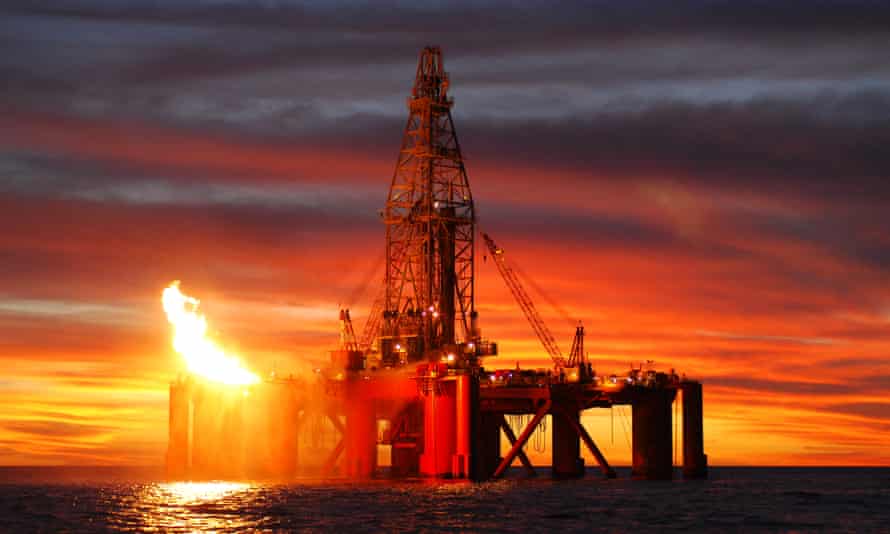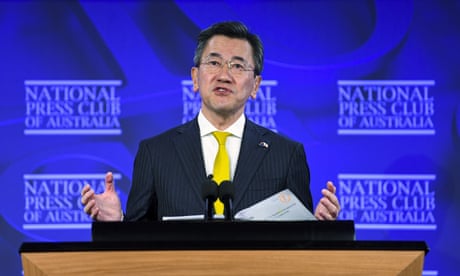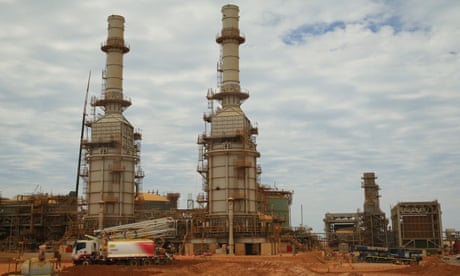Australia’s reliance on gas exports questioned as Japan winds down fossil fuel power
Government urged to speed up transition to green energy as Australia’s biggest market shifts away from LNG and coal

A Japanese pledge to wind down gas and coal-fired electricity much faster than previously planned has sparked warnings Australia needs to speed up a transition away from fossil fuel exports.
A draft revised energy mix released by Japanese officials on Wednesday said the country – Australia’s biggest market for liquefied natural gas (LNG) and thermal coal – would cut gas-fired electricity generation nearly in half and reduce coal power by more than a third by 2030.
The plan, devised to help the country ramp up emissions cuts by 2030, would require renewable energy to provide up to 38% of generation. Coal, LNG and nuclear energy would each provide about 20%.
While a shift away from coal has been widely forecast, the expected fall in Japanese gas-fired electricity is at odds with claims by the Australian government and the $36bn LNG export industry that its product would displace coal and help reduce global emissions.
Llewelyn Hughes, an associate professor at the Australian National University’s Crawford School of Public Policy, said the Japanese announcement was a “big deal” for Australia and consistent with the country’s target of having 45GW of offshore wind energy capacity – nearly equivalent to Australia’s current power grid – by 2040.
He said some thought it would be challenging for Japan to meet its revised targets, but the commitment showed the country was on a trajectory to using fewer fossil fuels. “It indicates a long-term decline in coal and gas,” Hughes said.
Over the past year, the Japanese prime minister, Yoshihide Suga, has set national targets of net zero emissions by 2050 and a 46% cut by 2030 compared with 2013 levels. The 2030 target had previously been a 26% cut.
Rebecca Mikula-Wright, the chief executive of the Investor Group on Climate Change, said the draft energy mix was “a clear signal of the country’s intent to speed up its decarbonisation”. Australia’s other major customers in Asia – China and South Korea – were also heading towards net zero emissions and would reduce demand over the coming decade, she said.
“To remain competitive in global export markets, Australia needs to quickly put in place the right climate policy and investment signals to help ensure we are producing the green energy and other products that our major trading partners will increasingly demand,” she said.
The country’s oil and gas lobby group, the Australian Petroleum Production and Exploration Association, rejected suggestions Japan’s shift meant gas would play a declining role.
Its chief executive, Andrew McConville, said Australian LNG was “an important part of a cleaner energy future” and would “still be needed in Japan to power their large manufacturing industry”. He said demand for gas in Asia had been forecast to grow significantly by 2040 and that gas with carbon capture and storage (CCS) was “a pathway to a large-scale clean hydrogen industry”.
Gas is used not only in electricity generation but also manufacturing industries, heating and cooking. It is often said to have about half the emissions of coal when burned, but studies have suggested this is an underestimate once leakage of methane – a potent greenhouse gas – during extraction and transportation is counted.
A recent major IEA report suggested the world should not open any new oil or gas fields or coal plants if it was to have a chance of limiting global heating to 1.5C above pre-industrial levels
But the prime minister, Scott Morrison, recently told the oil and industry it would “always” be a major contributor to Australia’s prosperity. It has committed $224m to to develop new gas fields in the Northern Territory’s Beetaloo Basin. Labor also supports opening up new gas reserves.
On Thursday, the resources minister, Keith Pitt, said the government would continue to “prioritise unlocking new sources of gas supply”. He said Japan was only one of Australia’s customers and demand from other Asian countries was set to rise. “Fast-growing nations such as India, China, Vietnam, Pakistan, Thailand and Bangladesh will likely take more Australian LNG,” he said.
Australia’s gas export industry has grown exponentially in northern Western Australia and Queensland since 2014. A June summary of resources and energy data published by the federal industry department showed Japan bought 37.9% of Australia’s LNG and 36.5% of thermal coal exports over the past year. Together, they were worth $22bn.
The extraction and processing of the gas have been responsible for a significant rise in Australia’s industrial emissions that, according to government reports, has effectively replaced some of the reduction in carbon dioxide caused by an influx of solar and wind into the electricity grid.
The government and industry justify the LNG industry’s local emissions by arguing Australian LNG has the potential to reduce global emissions by about 170m tonnes a year by displacing coal. Neither has produced evidence to show this is happening.
The federal Greens leader, Adam Bandt, said the Japanese announcement showed the major parties were giving communities “false hope” about coal and gas continuing for decades. The bipartisan political support to open the Beetaloo Basin was “economic and environmental madness”, he said.
“It’s time to face facts and tell workers in Queensland and New South Wales the truth. Coal and gas are now on borrowed time and we need to support workers and communities to transition,” Bandt said.



No comments:
Post a Comment